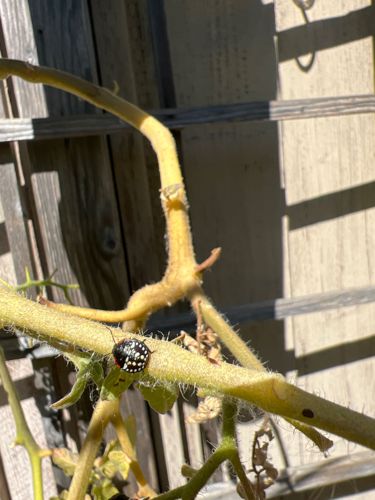Harlequin Bug
Scientific Name: Murgantia histrionica
Order & Family: Hemiptera (True Bugs), Pentatomidae (Stink Bugs)
Size: Adults typically range from 8 to 11 mm (0.3 to 0.4 inches) in length.

Natural Habitat
Harlequin bugs are commonly found in gardens, agricultural fields, and natural areas where their host plants grow. They prefer warm climates and are prevalent in southern regions of the United States, Mexico, and Central America.
Diet & Feeding
They are sap-sucking insects that feed on a variety of plants, primarily cruciferous vegetables (belonging to the family Brassicaceae) such as cabbage, broccoli, kale, collard greens, mustard, and radish. They can also feed on other plants like corn, beans, tomatoes, and even fruit trees.
Behavior Patterns
Harlequin bugs are known for their striking warning coloration, indicating their toxicity to predators. They are gregarious, often found in clusters, especially during mating and feeding. Females lay distinctive barrel-shaped eggs, usually in rows on the undersides of host plant leaves. Nymphs hatch and go through several instars, resembling smaller, wingless versions of adults.
Risks & Benefits
Potential Risks: Harlequin bugs are considered significant agricultural pests. Their feeding on plant sap can cause wilting, stunted growth, discolored spots, and ultimately death of host plants, leading to significant crop damage. Their large numbers can quickly decimate vegetable gardens. Potential Benefits: While primarily known as pests, like all insects, they are part of the food web and can be a food source for some predatory insects or birds, though their toxicity makes them less appealing to many.
Identified on: 8/18/2025